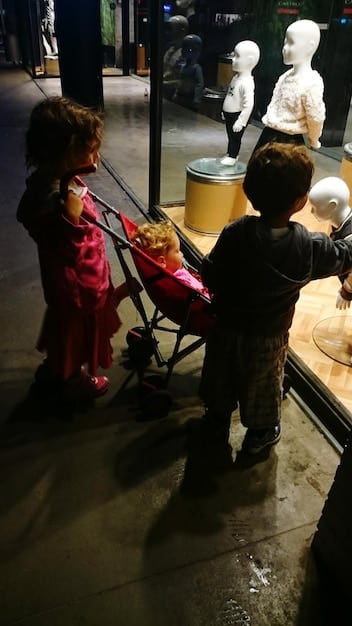The Latest Trends in US Theater: What’s Hot & How to Participate

The latest trends in US theater reflect a shift towards inclusive storytelling, immersive experiences, and community engagement, offering numerous avenues for audiences and aspiring artists to get involved.
Dive into the vibrant world of American theater and discover **the latest trends in US theater: What’s hot and how to get involved**. From innovative performances to community initiatives, the US theater scene is constantly evolving.
The Rise of Immersive Theater
Immersive theater is transforming the way audiences experience performances, blurring the lines between spectator and participant. This trend is gaining traction across the US.
These experiences place the audience directly into the narrative, engaging multiple senses and offering a unique, personalized journey. Unlike traditional theater, immersive productions often occur in unconventional spaces, such as warehouses or historical buildings, enhancing the sense of realism and adventure.
Key Elements of Immersive Theater
Several elements define immersive theater, creating a deeply engaging experience for the audience.
- Audience Interaction: Direct engagement with the performers and the environment is a hallmark of immersive theater.
- Unconventional Spaces: Performances often take place outside traditional theater settings, utilizing unique locations to enhance the narrative.
- Sensory Engagement: Immersive theater engages multiple senses, including sight, sound, touch, and sometimes even smell and taste, to create a holistic experience.
This is especially successful with modern audiences.
The impact of immersive theater extends beyond entertainment, fostering deeper connections between the audience and the story. By breaking down the fourth wall, these productions invite viewers to become active participants, shaping the narrative and influencing the outcome. This participatory nature enhances the overall experience, leaving a lasting impression and sparking conversations long after the performance ends.

In conclusion, immersive theater represents a significant shift in the landscape of US theater, offering audiences a more engaging and personalized experience. This trend is set to continue growing, with more innovative productions emerging across the country.
Focus on Diverse and Inclusive Storytelling
The US theater scene is increasingly emphasizing diverse and inclusive storytelling, reflecting a broader societal push for representation and equity. This trend is reshaping the narratives being told on stage.
This shift includes featuring stories from underrepresented communities, such as people of color, LGBTQ+ individuals, and people with disabilities. The goal is to create theater that reflects the rich tapestry of American society and provides a platform for voices that have historically been marginalized.
Initiatives Supporting Diversity and Inclusion
Several initiatives are driving the push for diversity and inclusion in US theater.
- Grant Programs: Organizations like the National Endowment for the Arts offer grants specifically for projects that promote diversity and inclusion.
- Mentorship Programs: These programs help emerging artists from underrepresented backgrounds gain the skills and connections they need to succeed.
- Community Outreach: Many theaters are actively engaging with local communities to ensure their programming reflects the interests and concerns of all residents.
By actively promoting diversity and inclusion, US theater is becoming more representative and relevant.
The focus on diverse and inclusive storytelling not only enriches the artistic landscape but also fosters greater understanding and empathy among audiences. By presenting a wide range of perspectives and experiences, theater can serve as a powerful tool for social change, challenging stereotypes and promoting dialogue.
In conclusion, the emphasis on diverse and inclusive storytelling is transforming US theater, making it more reflective of the communities it serves. This trend is vital for creating a more equitable and vibrant cultural sector.
The Use of Technology in Theatrical Productions
Technology is playing an increasingly significant role in theatrical productions, enhancing the visual and auditory experience for audiences. From projections to sound design, technological innovations are reshaping the way stories are told on stage.
This integration of technology allows for greater creativity and innovation in set design, lighting, and special effects. Digital projections can transform a bare stage into a dynamic landscape, while advanced sound systems can create immersive auditory environments. These technological advancements are pushing the boundaries of what is possible in theater.
Examples of Technological Integration
Here are some examples of how technology is being integrated into theatrical productions:
- Digital Projections: Using projectors to create dynamic backdrops and visual effects.
- Interactive Lighting: Employing lighting systems that respond to the actors’ movements and the mood of the scene.
- Virtual Reality (VR): Incorporating VR elements to create immersive experiences for the audience.
VR is an impactful tech incorporation.
The use of technology in theatrical productions not only enhances the visual and auditory experience but also opens up new possibilities for storytelling. By combining traditional theatrical techniques with modern technology, artists can create performances that are both innovative and emotionally resonant. This fusion of art and technology is attracting new audiences and revitalizing the theater industry.

In conclusion, technology is revolutionizing US theater, offering new tools for artists to create compelling and immersive performances. This trend is likely to continue, with further advancements in technology shaping the future of theater.
Community Engagement Initiatives
Community engagement initiatives are becoming increasingly important in the US theater scene, fostering closer ties between theaters and their local communities. These initiatives aim to make theater more accessible and relevant to a broader audience.
These programs often include workshops, educational outreach, and partnerships with local organizations. By engaging with the community, theaters can build a loyal following, attract diverse audiences, and contribute to the cultural vitality of their neighborhoods.
Types of Community Engagement Programs
Here are some common types of community engagement programs implemented by theaters:
Educational Outreach
Offering workshops and classes for local schools and community groups.
Free Performances
Providing free or discounted tickets to underserved populations.
Community Partnerships
Collaborating with local organizations to address social issues through theater.
Community engagement is beneficial to all.
The impact of community engagement initiatives extends beyond the theater itself, creating a ripple effect of positive change in the surrounding community. By providing access to the arts and addressing social issues through performance, theaters can become catalysts for dialogue, understanding, and social action. This two-way engagement strengthens the community and enhances the theater’s role as a vital cultural institution.
In conclusion, community engagement initiatives are transforming US theater, making it more accessible, relevant, and impactful. This trend is essential for building strong, vibrant communities and ensuring the long-term sustainability of the theater industry.
The Resurgence of Musical Theater
Musical theater is experiencing a resurgence in popularity across the US, with both classic shows and new works attracting large audiences. This trend reflects a renewed appreciation for the unique blend of music, drama, and dance that defines the genre.
The success of recent Broadway hits, as well as regional productions and community theater performances, underscores the enduring appeal of musical theater. From classic stories to contemporary narratives, musicals offer a diverse range of themes and styles that resonate with audiences of all ages.
Factors Contributing to the Resurgence
Several factors are contributing to the resurgence of musical theater:
- Nostalgia: Revivals of classic musicals evoke a sense of nostalgia and attract audiences who grew up with these shows.
- Original Scores: New musicals with original scores offer fresh and innovative experiences that appeal to contemporary audiences.
- Adaptations: Stage adaptations of popular movies and books bring familiar stories to the theater, attracting new fans.
Audiences love a good musical adaptation.
The resurgence of musical theater not only provides entertainment but also creates opportunities for artists, both on and off stage. From performers and musicians to set designers and technicians, the production of musicals supports a wide range of creative professionals. Additionally, musical theater serves as a training ground for young talent, fostering the next generation of performing arts professionals.
In conclusion, the resurgence of musical theater is invigorating the US theater scene, attracting diverse audiences and creating opportunities for artists and communities. This trend is likely to continue, with new musicals and revivals captivating audiences for years to come.
The Growth of Regional Theater
Regional theater is experiencing significant growth in the US, offering high-quality performances outside of major metropolitan areas like New York City. This trend is making theater more accessible to audiences across the country.
These theaters often showcase a mix of classic plays, new works, and community productions, providing a diverse range of programming that reflects the unique character of their local communities. Regional theaters play a vital role in fostering local talent and supporting the arts at a grassroots level.
Benefits of Regional Theater
Several benefits are associated with the growth of regional theater:
- Accessibility: Regional theaters make theater more accessible to audiences who may not be able to travel to major metropolitan areas.
- Community Engagement: These theaters often engage with local communities through workshops, educational outreach, and partnerships with local organizations.
- Talent Development: Regional theaters provide opportunities for local actors, directors, and designers to hone their skills and gain experience.
Regional theater thrives with community support.
The growth of regional theater is not only benefiting audiences and artists but also contributing to the economic vitality of local communities. By attracting tourists and supporting local businesses, regional theaters serve as important economic engines, enhancing the quality of life for residents and fostering a sense of community pride.
In conclusion, the growth of regional theater is strengthening the US theater scene, making it more accessible, diverse, and impactful. This trend is essential for fostering a vibrant cultural sector and supporting local communities across the country.
| Key Point | Brief Description |
|---|---|
| 🎭 Immersive Theater | Experiences blurring spectator/participant lines in unconventional spaces. |
| 🌟 Diverse Storytelling | Focus on underrepresented voices through inclusive narratives. |
| 💡 Tech Integration | Use of digital projections and interactive lighting to enhance productions. |
| 🤝 Community Engagement | Initiatives fostering partnerships and making theater accessible to all. |
FAQ
▼
Immersive theater places the audience directly into the performance environment, blurring the lines between spectator and participant, typically in unconventional spaces.
▼
Theaters are promoting diversity through grant programs, mentorships for emerging artists, and community outreach to ensure diverse representation on stage.
▼
Modern theaters utilize digital projections, interactive lighting, and virtual reality elements to enhance set design and create immersive audience experiences.
▼
Community engagement fosters closer ties between theaters and local communities, making theater more accessible and relevant through workshops, free performances, and partnerships.
▼
The resurgence of musical theater is driven by nostalgia, original scores, and adaptations of popular movies and books that attract diverse audiences.
Conclusion
From immersive experiences and diverse storytelling to technological innovations and community engagement, the US theater scene is dynamic and evolving. By staying informed and getting involved, you can be part of this exciting cultural movement.





